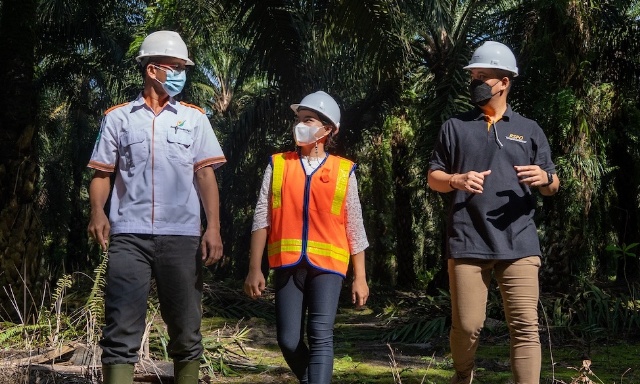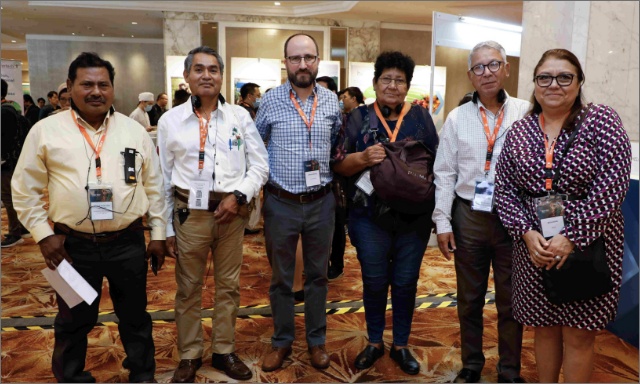The implementation period of GHG emissions reporting to RSPO using RSPO PalmGHG calculator or an approved equivalent tool for compliance to Indicator 5.6.3 of RSPO P&C (2013) ends on 31st December 2016. As of 1st January 2017, public reporting of GHG emissions is mandatory as part of the annual audit summary report published on the RSPO Website.
The RSPO Emission Reduction Working Group has assessed the PalmGHG V2.1.1 submissions and feedback from participating companies and based on the pilot results, a new and improved version of the calculator is available as PalmGHG V3.0.1.
The RSPO PalmGHG Calculator Version 3.0.1 (or an approved equivalent) shall be used to calculate emissions from estate and mill operations including GHG emissions from any land use changes after November 2005. Independent smallholders are encouraged to use RSPO PalmGHG Calculator Version 3.0.1 to calculate emissions from operations, however, it is not mandatory.
As part of public reporting, the following information and data are required to be verified by auditors and presented under C5.6 of assessment findings in the annual audit summary report. The following data and information can be obtained from the PalmGHG calculator.
| Emissions per Product | tCO2e/tProduct |
| CPO | |
| PK |
| Extraction | % |
| OER | |
| KER |
| Production | t/yr |
| FFB Processed | |
| CPO Produced |
| Land Use | ha |
| OP planted area | |
| OP planted on peat | |
| Conservation (forested) | |
| Conservation (non-forested) | |
| Total |
| Own Crop | Group | 3rd Party | Total | |||||
| tCO2e | tCO2e/tFFB | tCO2e | tCO2e/tFFB | tCO2e | tCO2e/tFFB | tCO2e | tCO2e/tFFB | |
| Emissions | ||||||||
| Land Conversion | ||||||||
| *CO2 Emissions from Fertiliser | ||||||||
| **N2O Emissions | ||||||||
| Fuel Consumption | ||||||||
| Peat Oxidation | ||||||||
| Sinks | ||||||||
| Crop Sequestration | ||||||||
| Conservation Sequestration | ||||||||
| Total |
| tCO2e | tCo2e/tFFB | |
| Emissions | ||
| POME | ||
| Fuel Consumption | ||
| Grid Electricity Utilisation | ||
| Credits | ||
| Export of Grid Electricity | ||
| Sales of PKS | ||
| Sales of EFB | ||
| Total |
Palm Oil Mill Effluent (POME) Treatment
| Divert to compost | % |
| Divert to anaerobic digestion | % |
POME Diverted to Anaerobic Digestion:
| Divert to anaerobic pond | % |
| Divert to methane capture (flaring) | % |
| Divert to methane capture (electricity generation) | % |
Submission of PalmGHG reports to the RSPO Secretariat is highly recommended to enable continued review on the use of the tool, to facilitate analysis of data and to inform future revision of the PalmGHG calculator.
Keep reading

Returning to Our Roots and Strengthening Communities: The RSSF Monitoring Journey in Jambi
Call for Expression of Interest: Colombia National Interpretation Task Force for 2024 RSPO Principles and Criteria (RSPO P&C)
Fast Tracking Certification for Indian Smallholders: Task Force Adapts ISH Standard to India’s Regulatory Landscape
Indonesia National Interpretation for ISH Standard Public Consultation: 8 August 2025 – 7 October 2025
Indonesia National Interpretation for P&C Public Consultation: 8 August 2025 – 7 October 2025
Call for Expression of Interest: Guatemala National Interpretation Task Force for 2024 RSPO Principles and Criteria (RSPO P&C)
Call for Consultants: Independent Evaluator for Compensation Plans and Reviewer for Drainability Assessment Reports





